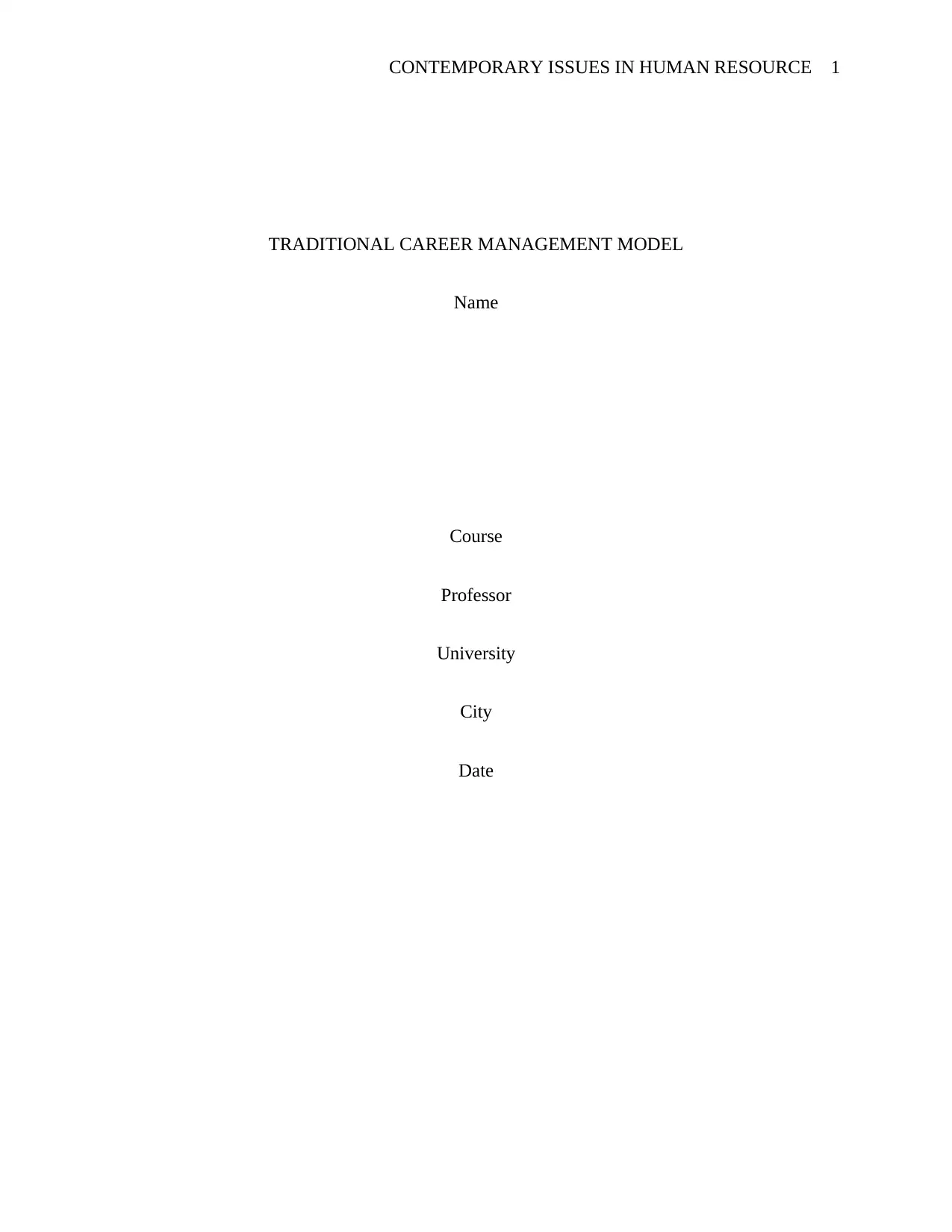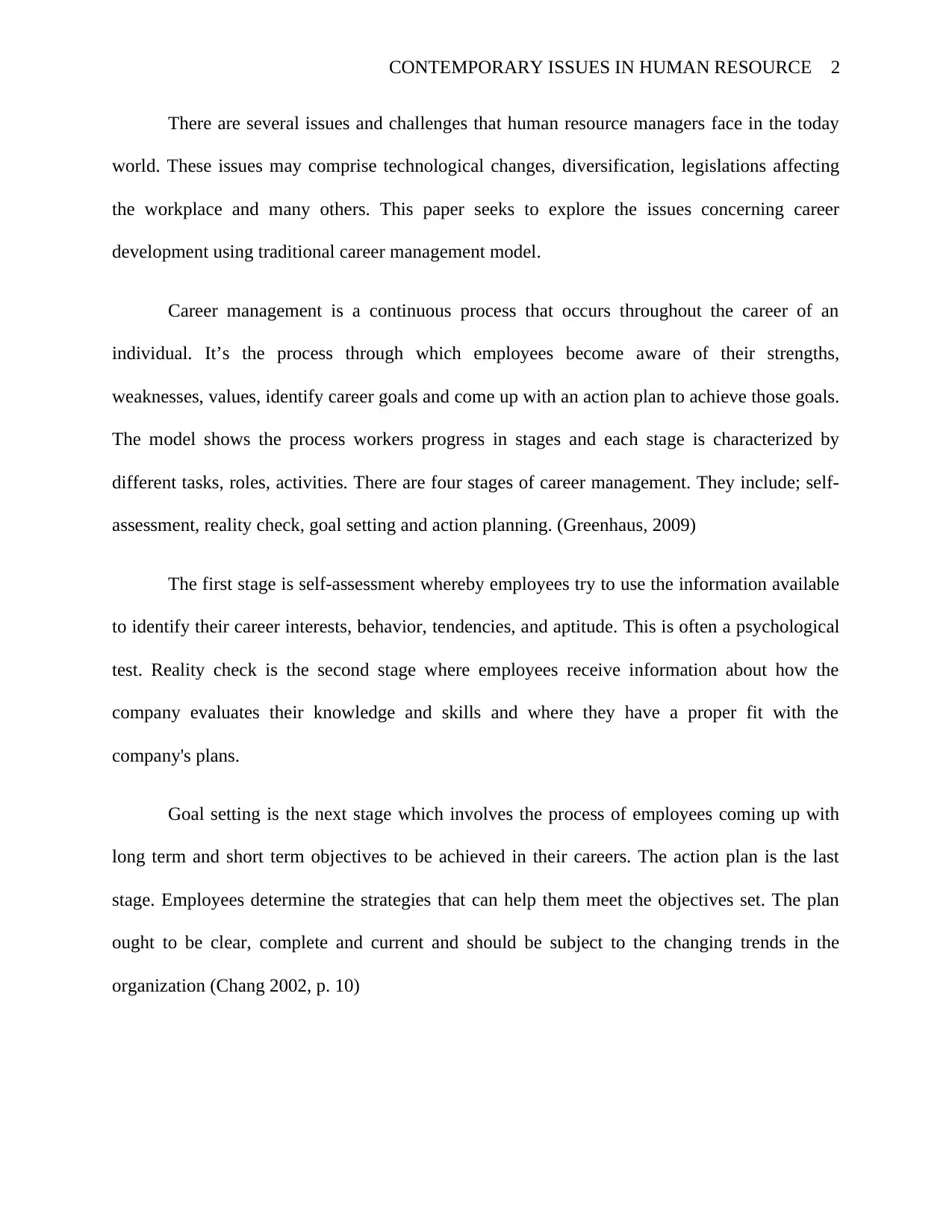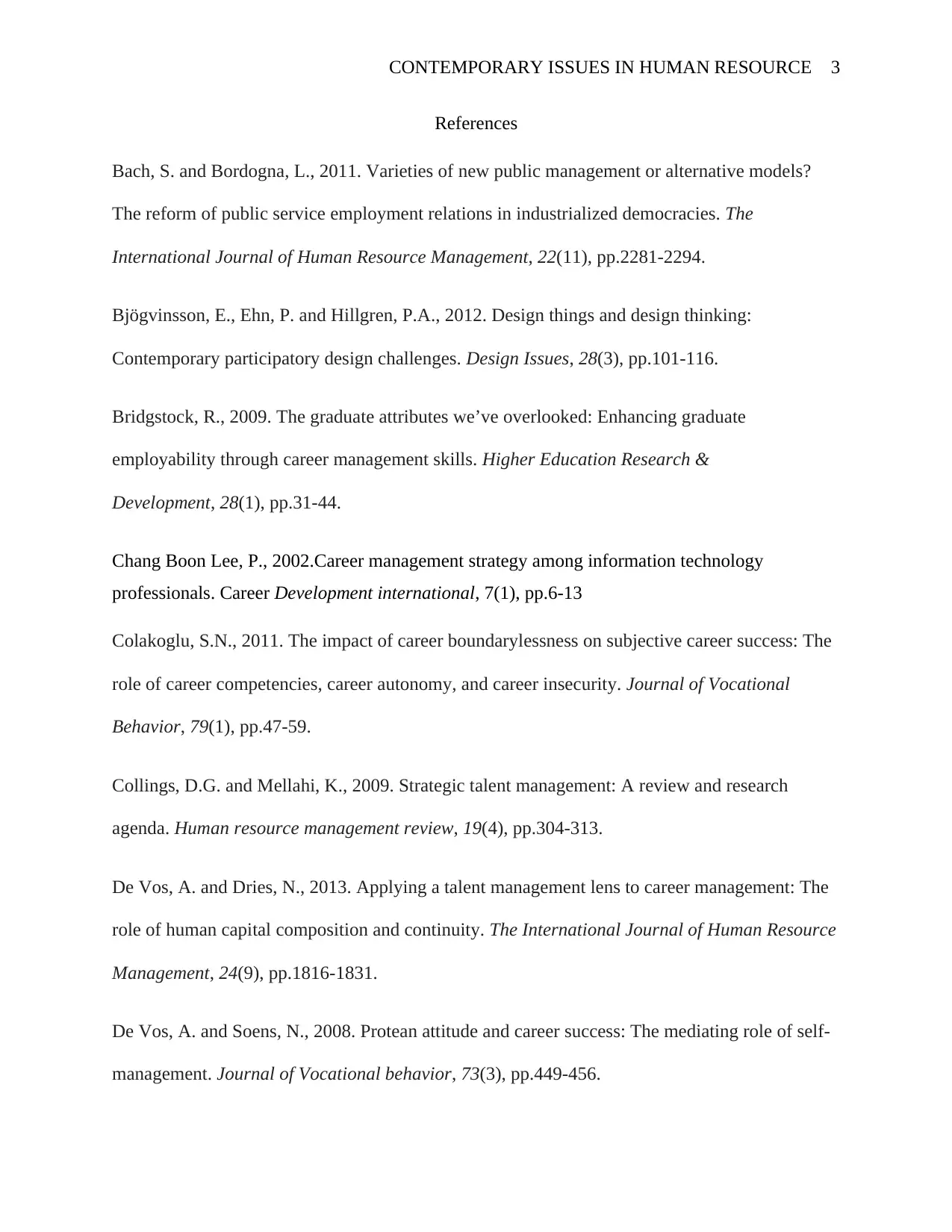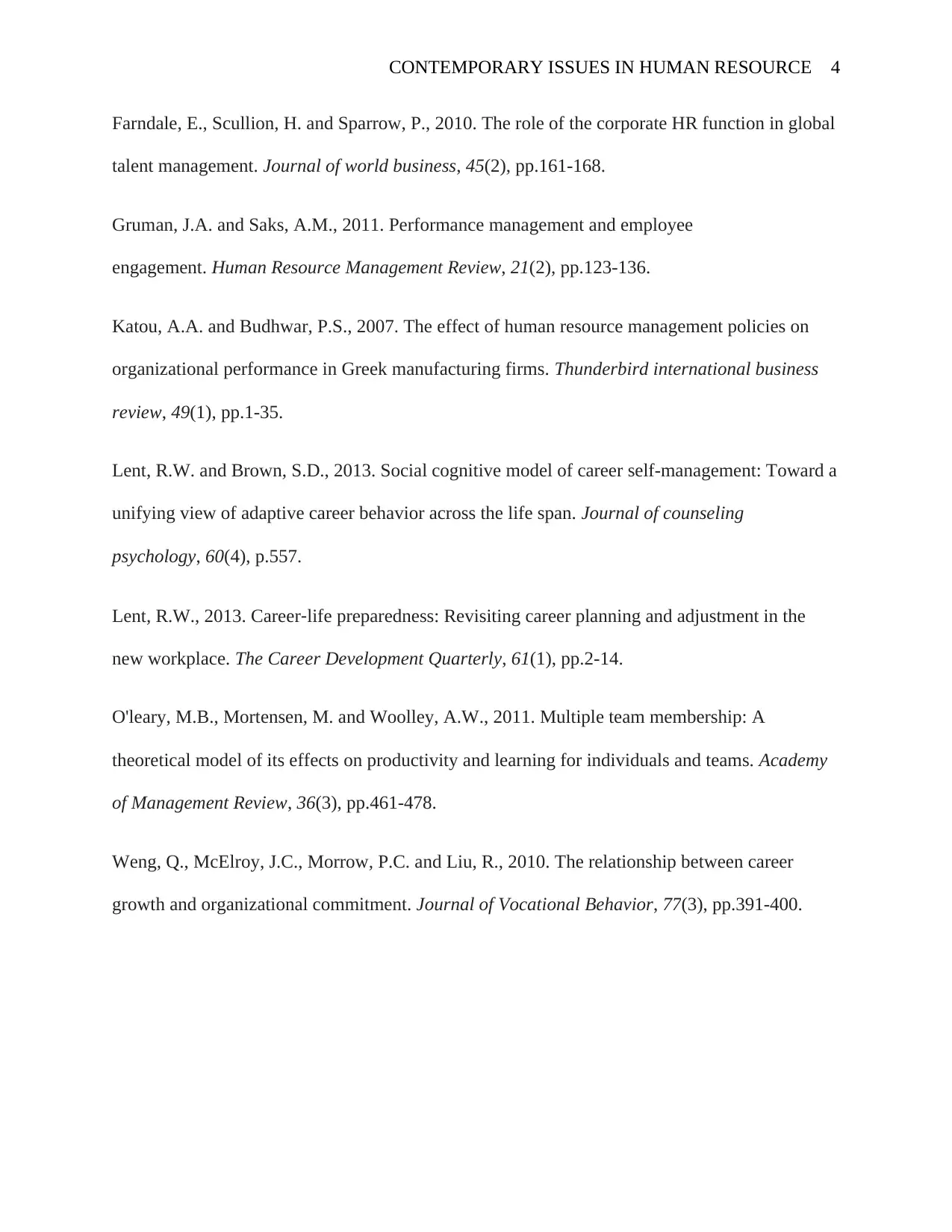Contemporary Issues in Human Resource: Career Management Analysis
VerifiedAdded on 2020/03/07
|4
|860
|177
Report
AI Summary
This report delves into the contemporary challenges faced by human resource managers, with a specific focus on career development through the lens of the traditional career management model. It outlines the key issues, including technological advancements, workplace diversification, and legislative changes. The core of the report centers on the four stages of career management: self-assessment, reality check, goal setting, and action planning. The self-assessment stage involves employees identifying their strengths, weaknesses, and interests. The reality check stage provides feedback on the employee's skills and their fit within the company. Goal setting involves establishing both short-term and long-term career objectives, while the action plan stage outlines the strategies for achieving these goals. The report references key academic sources to support its analysis of each stage and the overall model.
1 out of 4









![[object Object]](/_next/static/media/star-bottom.7253800d.svg)